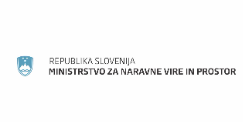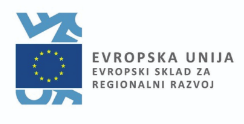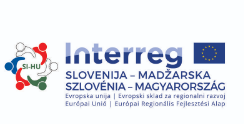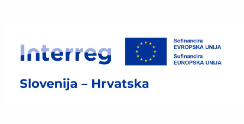4,000 BC (Neolithic also known as the "New Stone Age") - Findings of several stone tools, mainly stone axes, all over Goričko.
Between 4,000 and 2,300 BC. (Chalcolithic) - Possible settlement remains in the area of Goričko in villages as Puconci, Bukovnica, Hodoš and Kobilje. Several large caves have been discovered, pottery found and architectural remains (primitive dwellings). During this period Goričko was poorly populated.
750 BC - 5th century - From the Antiquity - Roman period, quite a few burial mounds with remains were found, the settlements aren̕ t known, since the area is remote and poorly connected to Roman routes.
5th to 12th century (Early Middle Ages) Found settlement by the village rotunda. The settlement of the Slavs in the 6th century. In the 9th century, Hungarian invasions and their final establishment.
The end of the 11th century - the eastern part of Goričko is part of the Hungarian Stražna krajina (Őrség). The border defense zone was guarded by guard settlements in the area of todays Hodoš, Dankovci and Strehovci.
At the beginning of the 12th century , the border of defense moved to the east Goričko. The Hungarian Civil County and Episcopal Diocesan Regulations were finally introduced. The area formally becomes part of the Hungarian kingdom, civilly-administratively falling under the administration of Vas County. Due to its defensive character and extensiveness of forests, the area was poorly populated. The first known landowners were »the jobagions« (lower nobility to whom the royal mayor assigned defense and administrative functions) and feudal families whom was the property given as gifts or feud.
In the 13th century, castle in the village of Grad was the civil-administrative and military center of the Slovenian landscape. Count Nikolai the owner of the castle and the estate around highly expanded the estate. The next owners the Amada family, were earning titles and extending their property all the way to Murska Sobota.
14th and 15th centuries (late Middle Ages) The emergence of individual villages connected with the Castle. Széchy family was the next who reign to the castle Grad and land. It extended the estate to the land of Dobra (Austria).
In the 16th century, the area was shaken by the Turkish war and their incursions. Large part of Hungary was occupated, which was divided into three parts. The area remained without protection and defense after the attacks. This has caused many migrations of people, results of many places been plundered or burned - contagious diseases have developed.
By the end of the 17th century , the Batthyányi family was one of the most powerful Hungarian families, who were also the bigest feudal landowner in Prekmurje. The estate was divided by several familys. The lords of the land took care of new colonists who were by origin Slovenians and Croats.
Feudal relations were increasingly interfered by the ruler, with a purpose of strengthening His and his states role.
The 18th century brought tremendous reforms, during the time of the new Absolute rulers. That was a period of abandoned property with heavy levies, compulsory paving and poor soil fertility. Goricko residents went to other County for seasonal work.
In the 19th century Hungarian feudal state collapsed. Many reforms followed - taxation, compulsory military and compulsory education. At the time of the formation of the Austro-Hungarian Monarchy, the repressed were transformed into hired workers, which paid off with an extraordinary increase in population by almost half. Accelerated industrialization has again led the migration people from villages to cities in to more economically developed regions or even to America.
Due to the economic impetus of the early 20th century , Goričko is again lagging behind. Economic development wasn̕ t touched upon here, farmers did̕n̕ t own their land and they were mainly indebted. During this period one third of the entire Goričko population has moved.
After 1918, through the churches, religious schools and local priests (expansion of Slovene books, worship in the native language), they intensively began to demand autonomy and to arousing political national consciousness in the people.
In 1919 the territory of present Prekmurje was occupied by the army of the Kingdom of Serbs, Croats and Slovenes. The border with Austria was established by Treaty of Saint-Germain-en-Laye in 1919 and the Hungarian Treaty by the Trianon Treaty in 1920. The new state border followed the ethical image of the area and was a political compromise. It most strongly affected the division of Goricko in Prekmurje wich was part of Slovenia and the part in Hungary called as Porabje. It divided families and estates. Unification with the new country had a positive effect on the development of our localities, but not for long. Agrarian reform, as well as poor land for cultivation and too much compensation again caused mass migration.
Images of people and landscapesin living at that time were captured by photographers Jerolim Purač (1897-1078) and Alojz Sbüll (1899-1995). The images of Goričko and Pomurje are collected in the Catalog of the exhibition of photographs from the collections of Marko Krenn, dr. Nikolai Szepessy, Alojz Sbüll Jr. and Stanke Desnik with the title Iden dojgemat - Prekmurje and Prekmurci through the lens of Purača and Sbülla between 1925-1945.
In 1941 Prekmurje was first occupied by the German and then also by the Hungarian army. Goričko survived the war period relatively peacefully, population od Goričko mostly suffered because of straitened circumstansec or poverty. They faced with many refugees wich have fled to the area and hid. The first partisan unit of Prekmurje, together with the Red Army, broke up the fortified positions of the German army along the Mura and Kučnica after five weeks of fighting.
In 1945, Prekmurje was liberated.
Finaly in the 1960s, residents began to live better. Actually better than ever before. They receive electricity, road connections and public transportation. Agrarian reform provided some additional land and the development of industry enabled employment.
RELIGIONFrom the 8th century we can find history of Christianity in Goričko. The oldest parishes in the KPG area are those from the Middle Ages (Castle, Dolenci, St. George, Kancevci, Gornji Petrovci, Kobilje, Bogojina, Dobrovnik, Markovci). In the 16th century, religion was shaken by the Reformation. At that time, religion spread from castles to parishes and from there to the population. The new faith named Protestantism quickly adopted Széchy and Batthyány family. In the early 17th century, all parishes were governed by Protestants, Evangelicals and Calvinists, but not for long. The area was covered by recatolization, first of family Batthyány, and then Széchy. After the end of the Turkish dangers, a counter-reformation began with a demand that all originally Catholic churches should be returned to Catholics. Later in the 19th century, churches were important tool in school system and education. All Slovene national activities were restricted to the Church and the local priests, who, through the expansion of Slovene books, worship in the local language and the demands for autonomy, helped to shape national consciousness. Today Catholics, Evangelicals and Pentecostal believers live together in harmony.








